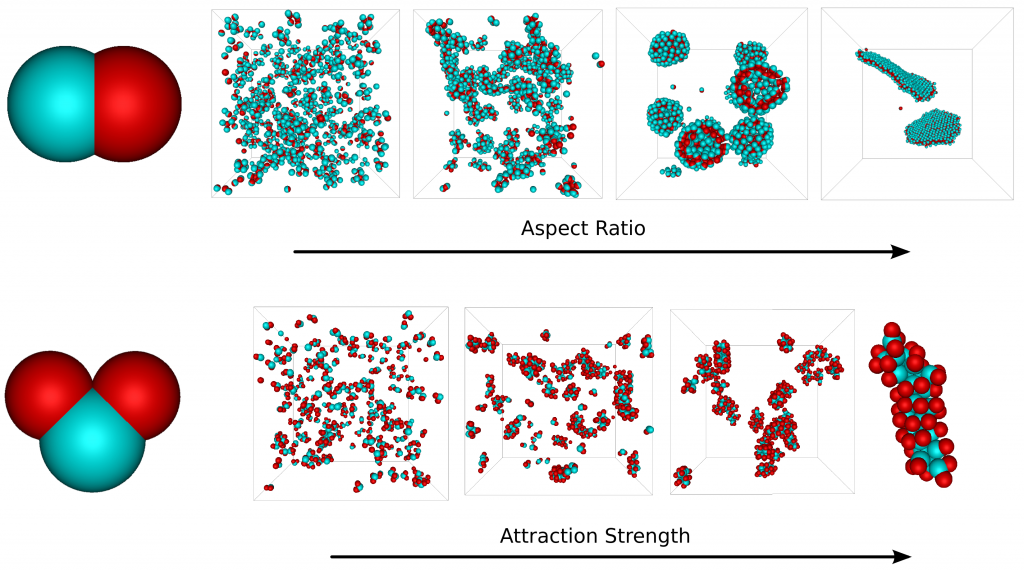
Guido Avvisati
Ornstein Laboratory, room 20
Princetonplein 1, 3584 CC Utrecht
P.O. Box 80 000, 3508 TA Utrecht
The Netherlands
phone: +31(0)30 253 8176
secretariat: +31(0)30 253 2952
e-mail: g.avvisati@uu.nl
Research
Promotor: Prof.dr.ir. M. Dijkstra
Employed since February 2013
Funded by FOM
Monte Carlo simulations, Molecular dynamics simulations
The spontaneous self-organization process of nano-to-micrometer sized colloidal particles into three-dimensional, highly ordered structures is referred to as colloidal self-assembly. Not only does this process poses many fundamental and interesting physics questions, but it also provides us with a cheap route to smart material synthesis and therefore has the potential to hit the industrial world, eventually our everyday life, with large impact.
I have so far invested the self-assembly process of patchy colloidal dumbbells (Fig. 1, top left) and “Mickey Mouse” particles (Fig. 1, bottom left).
In the first case, I found that changing the aspect ratio and the size ratio of the dumbbells results in a large variety of self-assembled structures (Fig. 1, top right): micelles, vesicles and bilayers [1].
In the second case (Fig. 1, bottom right), I demonstrated that, upon increasing the interparticle attraction, the “Mickey Mouse” particles first form a stable cluster phase and then self-assemble into long tube-like structures [2]. It is remarkable that collaborators from the Physical Chemistry group at Utrecht University were able to observe this transition in experiments [2].

Figure 1: (top left) Dumbbell particle model; (bottom left) “Mickey Mouse” particle model; (top right) Self-assembly of attractive dumbbells, driven by the aspect ratio of the dumbbells; (bottom right) Self-assembly of interacting “Mickey Mouse” particles, driven by increasing interparticle attractions.
[1] G. Avvisati et al., in preparation
[2] J. Wolters, G.Avvisati et al, submitted
